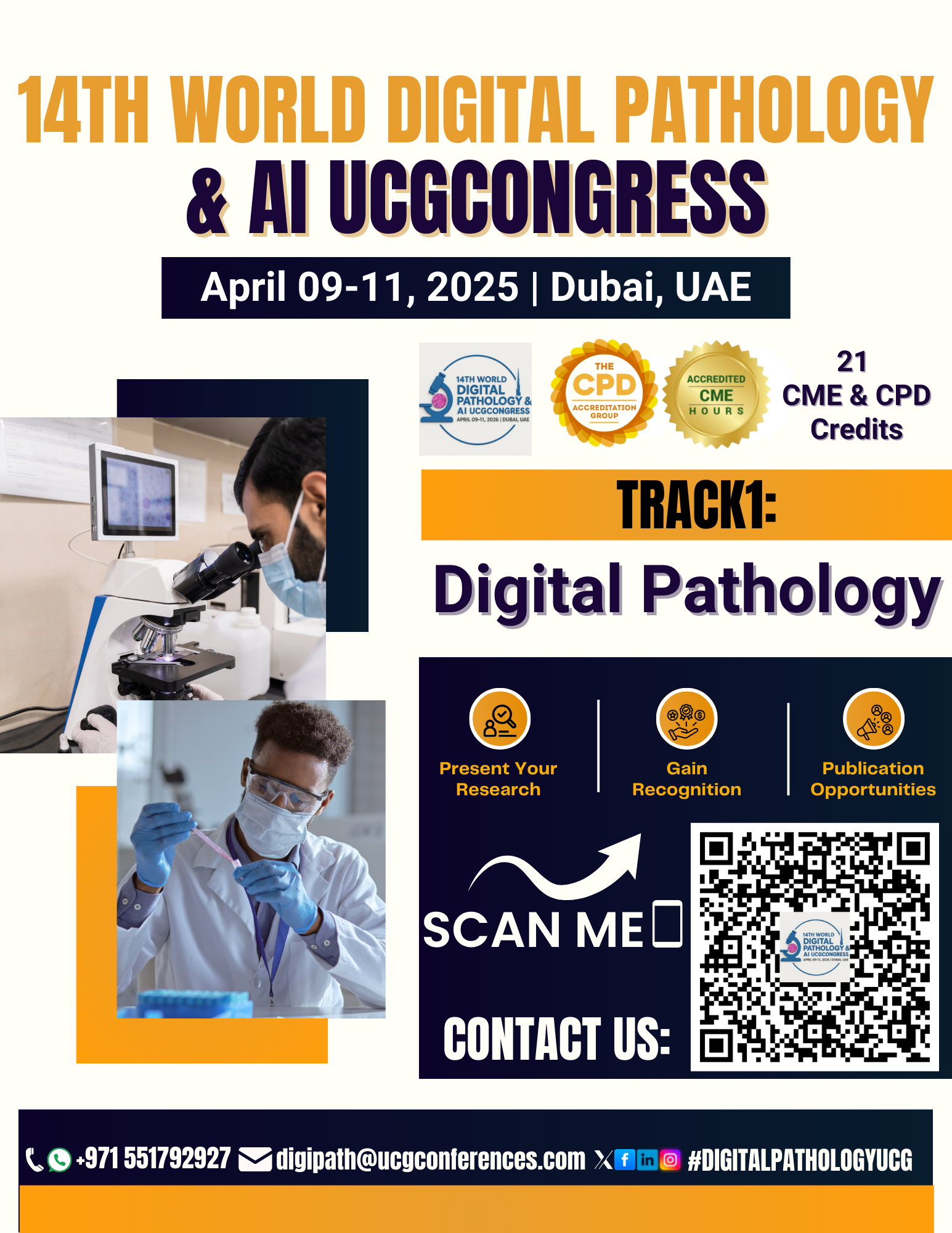



Sub track:-
Enhanced Image Quality Quantitative Analysis, Faster Turnaround Times,...

Sub track:-
Integration of Imaging Modalities, Advanced Image...

Track Overview:
Pathology
workflow optimization focuses on improving the efficiency and effectiveness of
pathology laboratory operations to deliver faster, more accurate results with
fewer resources. This track will explore innovative strategies and technologies
that streamline laboratory processes, reduce diagnostic errors, and enhance collaboration
across pathology teams. It will highlight the role of automation, data
management, and digital tools in achieving high-quality, cost-effective
diagnostic outcomes.
Key Topics:
Automation
in Pathology Labs:
Exploring the use of robotic systems, automated slide scanners, and other
technologies to automate repetitive tasks such as slide preparation, staining,
and image capture.
Digital
Pathology Integration:
How the adoption of digital pathology platforms, such as whole slide imaging
(WSI), enables more efficient image analysis, remote consultations, and
collaboration among pathologists.
Lean
Methodologies and Process Improvement: Implementing lean principles to reduce
waste, streamline workflows, and optimize resource allocation in pathology
labs.
Data
Management and Integration:
Enhancing workflow by integrating pathology data with other healthcare systems,
such as Electronic Health Records (EHR), laboratory information systems (LIS),
and hospital management systems.
Quality
Control and Assurance:
Ensuring high-quality diagnostic outcomes through systematic monitoring,
validation of results, and adherence to clinical standards and regulatory
requirements.
Telepathology
and Remote Workflows:
Using digital tools and telepathology to enable pathologists to review cases
remotely, collaborate more easily, and reduce delays in diagnostic reporting.
Learning
Objectives:
Learn
how automation technologies can streamline repetitive tasks and increase
productivity in pathology labs.
Discover
how digital pathology and data integration enhance workflow efficiency and
collaboration among pathologists and other healthcare professionals.
Understand
the application of lean methodologies in optimizing pathology lab processes and
improving resource allocation.
Explore
strategies for maintaining quality control and ensuring high diagnostic
standards in an optimized workflow.
Gain
insights into how telepathology and remote workflows can improve efficiency and
accessibility in pathology services.
Target
Audience:
Pathologists,
laboratory managers, healthcare IT professionals, workflow analysts, and
administrators looking to optimize pathology laboratory operations.
Speakers/Presenters:
Experts
in laboratory automation and robotics.
Digital
pathology specialists and vendors.
Lean
management and process improvement consultants.
Pathologists
and laboratory directors with experience in workflow optimization.
Conclusion:
This
track will highlight practical strategies and tools for optimizing pathology
workflows to achieve greater efficiency, accuracy, and cost-effectiveness in
diagnostics. By integrating automation, digital tools, and data management
systems, pathology labs can improve turnaround times, reduce errors, and
enhance the overall quality of care.